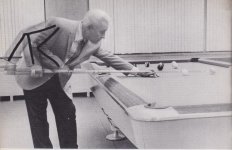It is in the American nature to create long-standing feuds:
[...]
But the longest are personal:
[...]
The Irish have been killing each other for centuries, resolving little.
In my own peaceable country, a family known as the Black Donnellys feuded with the surrounding community for 33 years.
One fateful night their homestead was burned to the ground, taking many members of the family with it. While no one was ever convicted in their murders, it is widely believed that there may have been a conspiracy of silence adhered to by the town members. To this day, it is said that the residents refuse to talk about the Black Donnellys and all reference to the families has been removed from the library and town records. In fact, the gravestone for the family was replaced in 1964 to remove the word "murdered."
So, you see, the intellectually uplifting discussions on these boards is a highly civilized response to different points of view.



For Americans.
